The Bond Shakeout
Posted On Thursday, Jul 22, 2021
The interest rate has the power to make or break an economy. In a modern monetary setup, central banks set the short-term policy rates and allow bond markets to determine longer-term interest rates. This endows bond markets with an unimaginable power to influence an economy; and thus, everything else.
James Carville, the adviser to former US president Bill Clinton, once jokingly said - “If there was incarnation…I would like to come back as the bond market. You can intimidate everybody”.
Central banks, from time to time, take hold of this power of setting long-term interest rates thanks to their monopoly in printing money. Since the global financial crisis of 2008, developed world central banks have used unconventional monetary policy to try and bring down and keep long-term interest rates low to stimulate the economy. They have introduced quantitative easing, large-scale asset purchases, yield curve twists, yield level targeting and many other market interventions to influence the market bond yields.
The Reserve Bank of India, historically, had shied from accepting its interventions at the long end of the bond yield curve and often termed it as a mere liquidity operation. The press release would say ‘based on evolving liquidity conditions, the RBI is conducting an open market purchase operation of government bonds’.
However, this posturing has changed completely under the current RBI governor Shaktikanta Das.
In the last two years, the RBI has not just intervened across the maturity curve, it has guided the market expectations through open commentaries about the level of bond yields, the shape of the yield curve and also through tactical interventions in primary debt auctions. In the face of large government bond supply, these actions have reduced volatility and induced an uneasy calm in the bond market.
Market Turbulence
The RBI-induced calm in the bond market has been broken in the past few weeks. Bond yields have moved up by 20-30 basis points in a matter of few days. The market witnessed a broad-based selling; – seen across the maturity curve. Even the 10-year benchmark government bond, which was tightly held around 6% by the RBI, broke out of its shell. As on July 13, 2021, the existing 10-year benchmark Gsec was trading at 6.20%. The new 10-year bond was issued at 6.1%.
Chart – I: Inflation Spike spooked the bond market
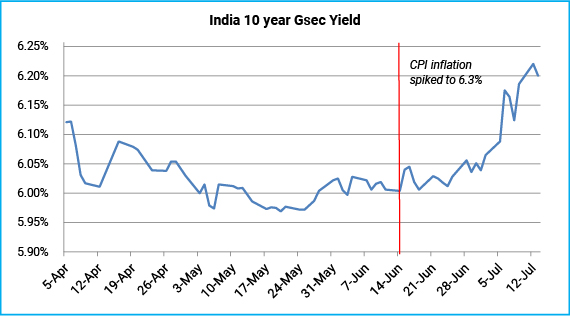
Source: Bloomberg, Quantum Research | Data Up to July 13, 2021
Past performance may or may not sustain in future.
This selloff could be attributed to -
(1) a surprise jump in CPI inflation in the month of May 2021; and
(2) rising crude oil prices.
Inflation is here to stay.
The CPI inflation posted a significant upward surprise in May 2021 (data released on June 14, 2021). Headline CPI had come at 6.3% against a market forecast of about 5.4%.
This one reading has reset the entire inflation trajectory and prompted a significant upward revision in the inflation estimate for the whole of FY22. Headline CPI inflation is now expected to average around 6.0% in FY22 as against earlier forecasts of around 5.1%. The RBI is yet to change its CPI inflation forecast to 5.1%.
More importantly, it changed the market’s attitude towards inflation. Inflation was considered a risk even earlier. But Not this Much. Not so Soon.
Chart – II: Inflation breached the 6% ‘Laxman Rekha’
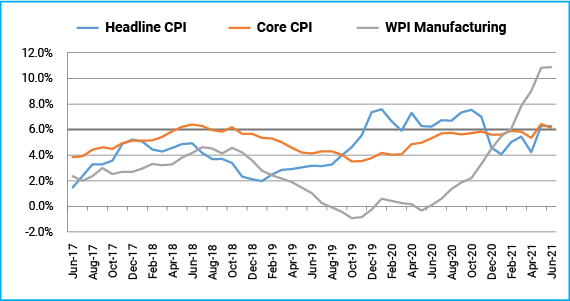
MOSPI, eaindustry.nic.in, Quantum Research | Data as of June 30, 2021
As a relief, sequential momentum softened across many components of the CPI basket in June 2021. The headline CPI came marginally lower at 6.26% in June. This was a positive surprise for the market as estimates were ranging between 6.6%-7.0%.
Nevertheless, the broader inflation trend remains elevated and there is incremental upside risk emanating from sluggish progress of monsoon, stubbornly high crude oil prices and increased pricing power with corporate India.
CPI inflation may sustain above the 6% threshold for some time. The RBI, in its policy thinking, has been running a risk of misjudging the inflation threat. Thus, persistent inflation could prompt a change in policy thinking sooner than anticipated.
Policy Response
In the June edition of the Debt Market Observer - Inflection Point we expected the RBI to loosen its grip over the bond yields and allow market forces to price the inflation risk appropriately. This can be seen to some extent during the recent sell-off in the 10-year government bond and the auction of the new 10-year paper. The RBI did allow yields to move higher and did not devolve or cancel the latest auction.
We see it as a first step in the direction of policy normalization.
Next month, the monetary policy committee (MPC) will meet with a backdrop of outsized inflation shock and steady but fragile growth recovery. The RBI governor Shaktikanta Das, in an interview to the financial daily business standard, referred to the current inflation spike as a ‘transitory hump’, driven largely by supply-side factors. He also cautioned that “Any hasty withdrawal of monetary policy support will negate the nascent or incipient recovery that is taking place”.
In India, monetary policy is set by 6-member monetary policy committee by vote. The RBI governor, in his voting and commentary, has been on the dovish side of the spectrum. We may possibly find some MPC members more concerned about inflation risks and willing to act sooner. Certainly, there will be more discussion about the inflation risks and course of policy normalisation.
The RBI could change its policy statement in the August review to incorporate inflation risks appropriately in its forward guidance. However, any action on policy rates looks unlikely at this moment. We expect liquidity withdrawal and policy rate increases to start by the third quarter of FY22. We expect liquidity withdrawal measures to allow the overnight rate to move towards the Repo rate by the end of this year. We should also expect rate hikes in the fourth quarter of FY 22.
Chart – III: Policy rate likely to rise by year-end
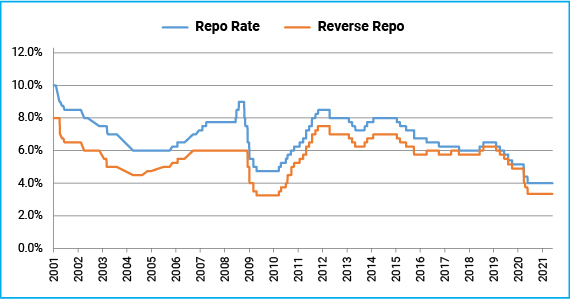
Source: RBI, Quantum Research | Data Up to June 2021
Past performance may or may not sustain in future.
Rates poised to move higher
In the short-run, RBI’s actions will remain the key driver for the Indian bond market. The RBI has already committed to purchase Rs. 1.2 trillion of government bonds under GSAP 2.0 in Q2 FY22.
Given the extraordinarily large size of the government’s borrowing requirement, the RBI will have to continue its market interventions well into the future to maintain calm in financial markets. It is expected that the RBI will buy INR 4.0-4.5 trillion of central and state government bonds in FY22. This should extend some support to the market over the coming months.
Chart – IV: Government borrowing to remain high in foreseeable future
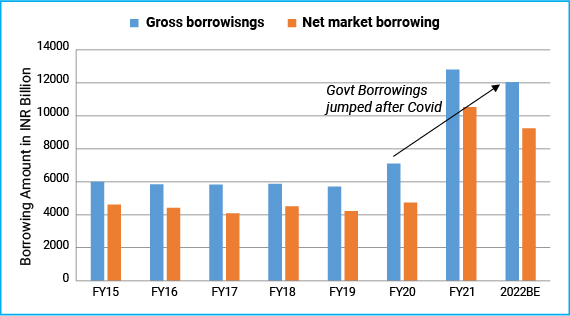
Source: CMIE, Indiabudget.gov.in, Quantum Research
Table - I: Much Larger RBI support will be needed to fund the government’s borrowing program
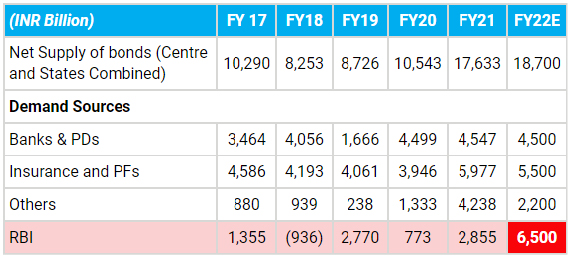
Source: RBI, Quantum Research | Data Upto March 31, 2021
FY22 numbers are as per Quantum Research Estimate
However, we expect that the RBI will continue to lower its other tactical market interventions like auction cancellations, devolvement, special OMOs, etc. and will allow market forces to adjust to economic reality.
Over the medium term, inflation and potential monetary policy normalization will play a more important role in shaping the interest rate trajectory. With gradual progress in covid vaccination and inflation picking up, talks of policy normalization will intensify.
The market tends to front-run policymakers. Yields could move higher even though RBI maintains an accommodative stance.
We continue to believe that bond yields have already bottomed out in this cycle and expect it to move higher over the next 1-2 years.
Chart – V: Bond yields near-decade lows, poised to move higher
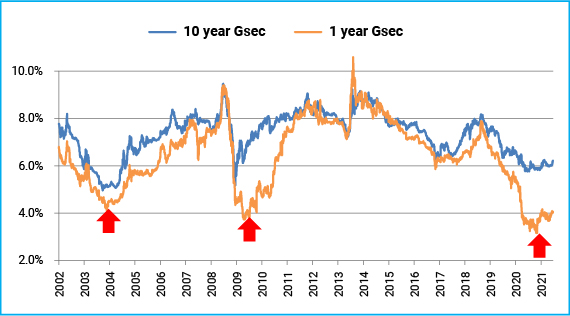
Source: RBI, Quantum Research | Data as on July 13, 2021
Past performance may or may not sustain in future.
Portfolio Outlook
In the Quantum Dynamic Bond Fund (QDBF) portfolio, we continue to focus on tactical trading opportunities within a narrow range. QDBF does not take any credit risks and invests only in sovereigns and top-rated PSU bonds, but it does take high-interest rate risk from time to time.
Currently, the QDBF portfolio is defensively positioned with higher than usual cash and a significant portion of the portfolio is invested in below 2-year government bonds to keep interest rate risk under check. This position appropriately reflects our cautious view of the market.
We also have some allocation to the ultra-long segment of the yield curve, which has moved up significantly in the last two months. At current valuation, it has already priced a significant policy tightening over the coming years.
In the Quantum Liquid Fund, we continue to focus on short-term treasury bills and good-quality PSU debt securities. With the ample liquidity in the banking system, the yield on short-term money market papers may remain around the reverse repo rate.
We have been saying this since the start of the year that, investors should acknowledge that the best of the bond market rally is now behind us. At this time, it would be prudent to lower the return expectations from fixed income products – as money market yields, fixed deposits rates will remain low and potential capital gains from long bond funds will be muted.
Conservative investors should remain invested in categories like liquid funds where the impact of interest rate rise would be favorable. However, while selecting a liquid fund be cautious of the credit quality and liquidity of the underlying portfolio.
At this point where fixed deposit rates have come down to historical lows, liquid funds could be an option (with market risk) in comparison to locking in long-term fixed deposits. Liquid Funds invest in up to 91-day maturity debt securities, which get re-priced higher when interest rates rise. Fixed deposits interest rates remain fixed for the entire tenor thus lose out during a rising interest rate cycle.
Investors with a higher risk appetite and longer holding period can consider dynamic bond funds where the fund manager has the flexibility to change the portfolio when the market view changes. These funds are best suited for long-term fixed income allocation goals. However, do remember that bond funds are not fixed deposits, and their returns could be highly volatile and even negative in a short period.
Another risk on the horizon: Taper Tantrum 2.0?
India is not the only country grappling with rising Inflation. This has become a global phenomenon. CPI inflation in the US rose to 5.4% in June 2021, which is the highest in 13 years. Other advanced economies are also witnessing a pick-up in inflation. This has raised an extensive debate about the future course of monetary policy. Most prominent among these is the ongoing talk of tapering asset purchases by the US Federal Reserve.
US monetary policy has an enormous spillover impact on emerging economies. In 2013, a mere hint of tapering the bond purchases by the US Fed caused turmoil in emerging economies. In 2018 also EMs faced the brunt of interest rate increases in the US.
India was one of the worst-hit economies during the “taper tantrum” episode of 2013. India’s macroeconomic position and external accounts are in much better shape now than what it was in 2013. The RBI has also built a significantly large war chest of foreign exchange reserves, which now stand above USD 600 billion. Nevertheless, Indian markets might not be immune to any large shock in the global sphere.
Table - II: India not ‘Fragile’ anymore?
| India Macro Conditions | Pre and during Taper Tantrum of 2013 | Current Inflation Tantrum 2021 |
| GDP Growth | Post GFC stimulus pump primed growth but fizzed off | Below potential going into COVID. Recovering better than expected |
| Inflation | High Producer and Consumer Inflation | Near RBI’s upper threshold |
| Oil Prices | Hovering around $100/brl | Near $75/brl, expected to rise |
| Current Account Deficit | Very high; >3% of GDP | Under Control; Near 1% of GDP |
| FX Reserves and External Debt | Low reserves. High corporate FX debt due for maturity | FX reserves well above Total External Debt. Low Corporate FX leverage |
| Foreign Portfolio Flows | Bond Tourists Weak FDI | Long term real money flows / Strong FDI |
| Real Interest Rates | Deeply negative | Negative |
| Currency Valuation | Over-valued | Over-valued |
Source: Quantum Research
The sudden change of monetary policy direction in the US remains a big risk for the Indian bond market in 2021. It is imperative for investors in emerging markets like India to keep this risk in mind. If US 10-year treasury yields indeed head up towards the 2.0-2.5% range quickly, global asset markets will face some turmoil.
Chart – VI: Rising US Treasury yield risk to Indian Bonds
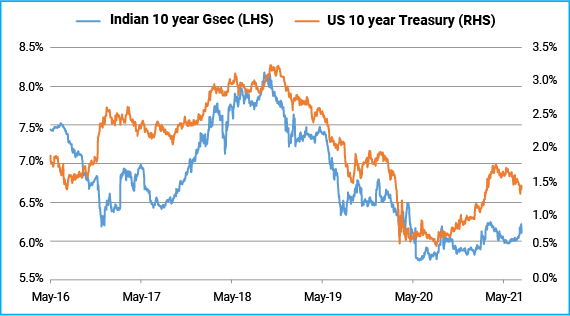
Source: Bloomberg, Quantum Research | Data Up to July 13, 2021
For any queries directly linked to the insights and data shared in the newsletter, please reach out to the author – Pankaj Pathak, Fund Manager – Fixed Income at [email protected].
For all other queries, please contact Neeraj Kotian – Area Manager, Quantum AMC at [email protected] / [email protected] or call him on Tel: 9833289034
Read our last few Debt Market Observer write-ups -
- Inflection Point
- The Inflation Tantrum
| Name of the Scheme | This product is suitable for investors who are seeking* | Riskometer |
| Quantum Liquid Fund An Open Ended Liquid Scheme | • Income over the short term • Investments in debt / money market instruments | 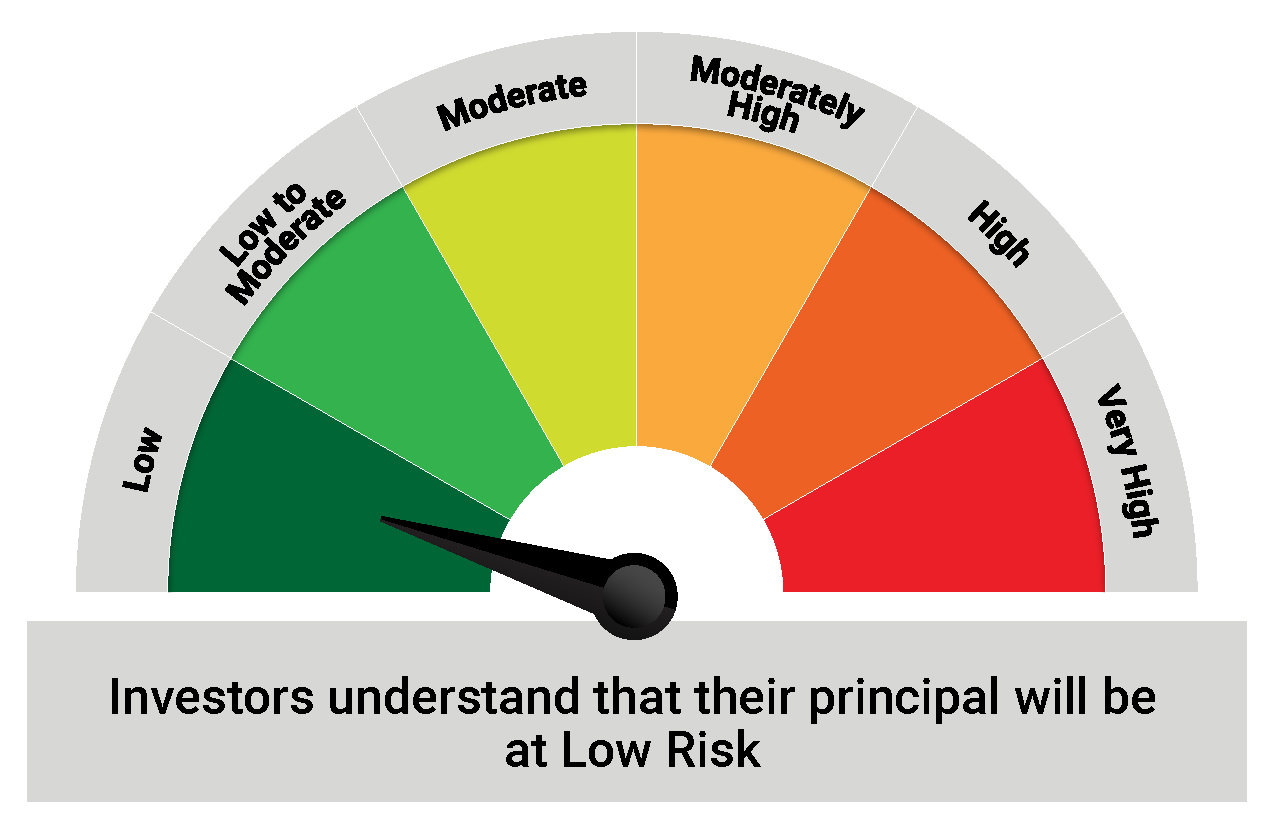 Investors understand that their principal will be at Low Risk |
| Quantum Dynamic Bond Fund An Open Ended Dynamic Debt Scheme Investing Across Duration | • Regular income over short to medium term and capital appreciation • Investment in Debt / Money Market Instruments / Government Securities | 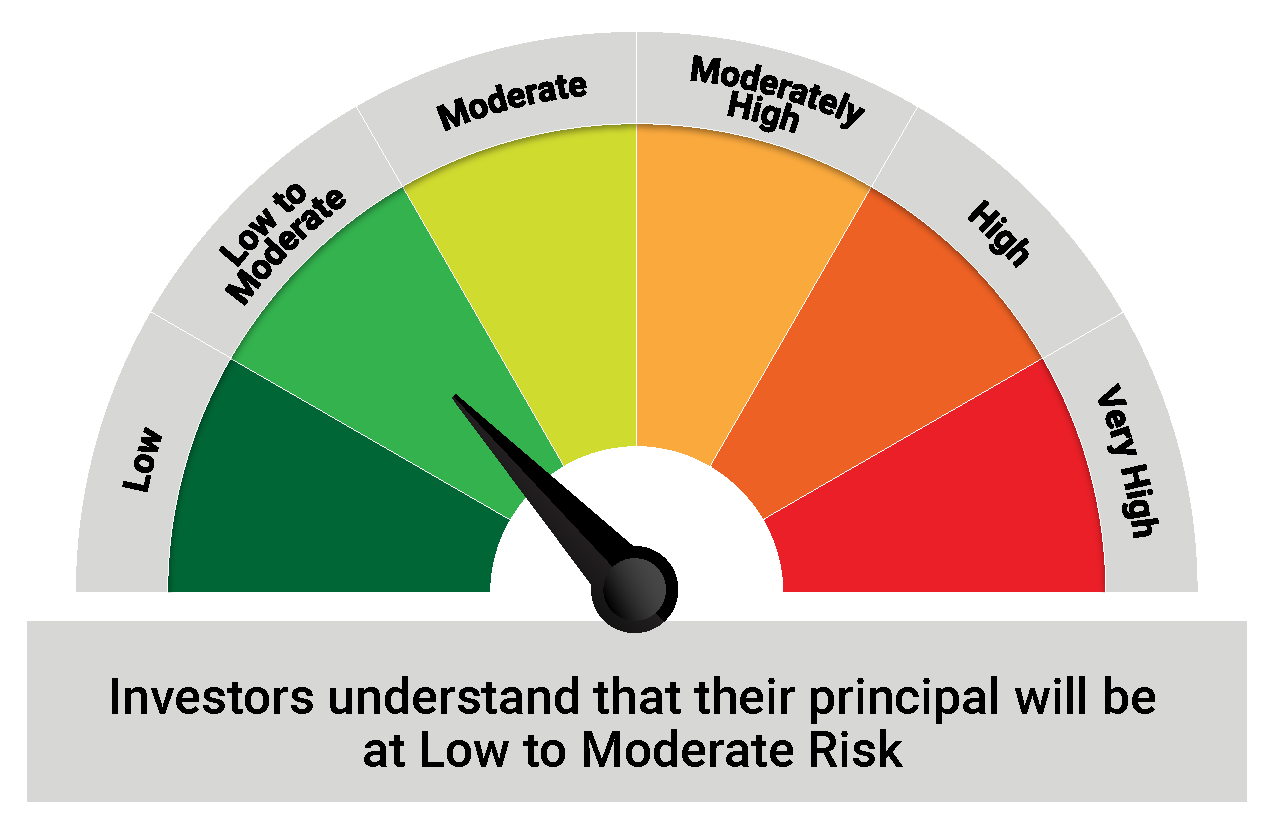 Investors understand that their principal will be at Low to Moderate Risk |
The Risk Level of the Scheme in the Risk O Meter is based on the portfolio of the scheme as on June 30, 2021.
Disclaimer, Statutory Details & Risk Factors:
The views expressed here in this article / video are for general information and reading purpose only and do not constitute any guidelines and recommendations on any course of action to be followed by the reader. Quantum AMC / Quantum Mutual Fund is not guaranteeing / offering / communicating any indicative yield on investments made in the scheme(s). The views are not meant to serve as a professional guide / investment advice / intended to be an offer or solicitation for the purchase or sale of any financial product or instrument or mutual fund units for the reader. The article has been prepared on the basis of publicly available information, internally developed data and other sources believed to be reliable. Whilst no action has been solicited based upon the information provided herein, due care has been taken to ensure that the facts are accurate and views given are fair and reasonable as on date. Readers of this article should rely on information/data arising out of their own investigations and advised to seek independent professional advice and arrive at an informed decision before making any investments.
Mutual fund investments are subject to market risks read all scheme related documents carefully.
Please visit – www.QuantumAMC.com to read scheme specific risk factors. Investors in the Scheme(s) are not being offered a guaranteed or assured rate of return and there can be no assurance that the schemes objective will be achieved and the NAV of the scheme(s) may go up and down depending upon the factors and forces affecting securities market. Investment in mutual fund units involves investment risk such as trading volumes, settlement risk, liquidity risk, default risk including possible loss of capital. Past performance of the sponsor / AMC / Mutual Fund does not indicate the future performance of the Scheme(s). Statutory Details: Quantum Mutual Fund (the Fund) has been constituted as a Trust under the Indian Trusts Act, 1882. Sponsor: Quantum Advisors Private Limited. (liability of Sponsor limited to Rs. 1,00,000/-) Trustee: Quantum Trustee Company Private Limited. Investment Manager: Quantum Asset Management Company Private Limited. The Sponsor, Trustee and Investment Manager are incorporated under the Companies Act, 1956.
Related Posts
-

The Pivot
Posted On Friday, Apr 21, 2023
The fiscal year 2022-23 has come to an end. The defining feature
Read More -

Yield Curve Inversion Ahead
Posted On Thursday, Mar 23, 2023
Indian money markets have tightened meaningfully over the last one and a half month.
Read More -

Past, Present, and Future of Inflation
Posted On Friday, Feb 24, 2023
Inflation has been one of the biggest challenges in the post-pandemic world.
Read More



